What is required of future tourism research in Japan?

ADVERTISING STUDIES

Tomoya Umekawa
Japan National Tourist Organization

Noriko Yagasaki
Toyo University
Japan, aiming to become a tourism-oriented nation, has recently intensified various initiatives. Perhaps as a result, the number of foreign visitors to Japan continues to grow steadily. Will this be a fleeting boom, or will it grow into an industry that becomes a pillar of the economy? The key lies in tourism research that supports policy and industry. How has Japanese tourism research contributed to policy and industry thus far? And what insights does it offer for the new era? We spoke with key figures in tourism research.
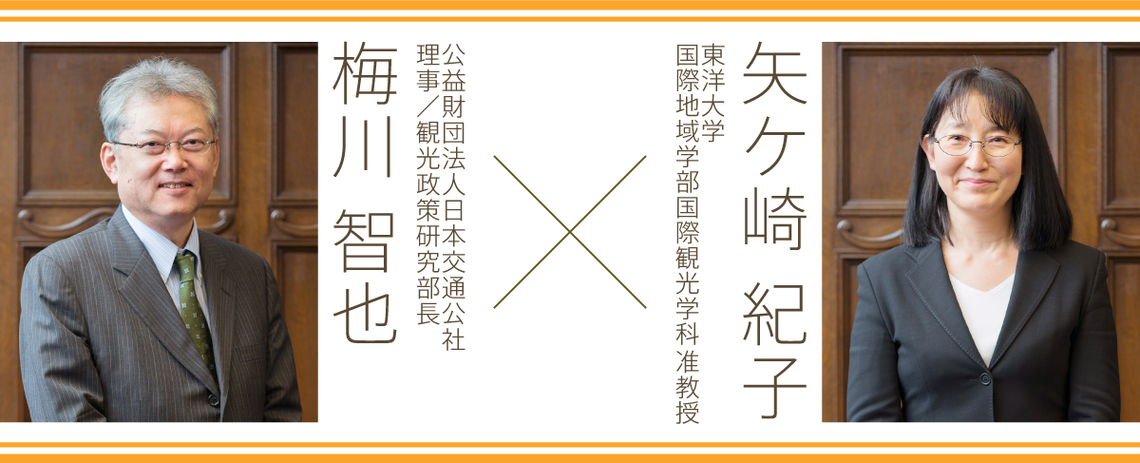
Japanese tourism research began in the Meiji era
── Tourism is an ancient yet new theme. Could you reflect on the history of tourism studies in Japan?
Umezawa: While the history of Japanese travel, such as pilgrimages to Kumano and Ise, is ancient, I believe tourism research itself began in the Meiji era. At that time, various diplomatic missions crossed the seas, and upon returning home, they began developing tourist destinations within Japan. For example, Maeda Seimei, a native of Satsuma, was introduced to Sakamoto Ryoma and went to study in France in 1871. After returning, he saw the forests of Akan in Hokkaido and declared, "This is not a forest to be managed for forestry, but a forest to be seen," suggesting tourism development. While not at the level of formal research, I believe this practice of creating tourist destinations based on overseas examples marks the beginning of tourism studies in Japan.
Yagasaki: Inbound tourism first became a national policy in the late Meiji period. To promote tourism, the Railway Bureau established the Japan Tourist Bureau in 1912. This was the predecessor to the Japan National Tourist Organization, where Mr. Umekawa is now. In fact, from that time until the establishment of the Japan Tourism Agency in 2008, inbound tourism never resurfaced as a national policy. Perhaps because of this, tourism research didn't develop much in Japan. I transferred from the private sector when the Japan Tourism Agency was established. When formulating tourism policy, I was surprised by the scarcity of prior research. Few professors specialized in tourism studies, so we had to rely on the expertise of those writing papers on input-output analysis and economic ripple effects.
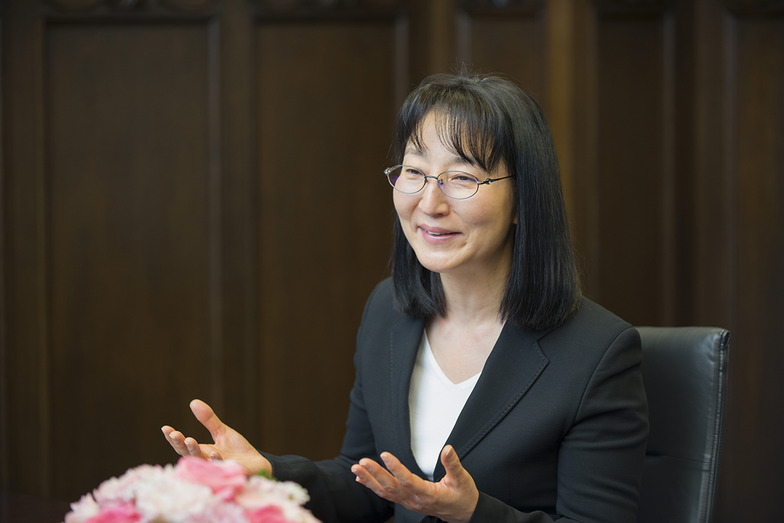
Umekawa: That's because tourism research in Japan long focused on tourism development and creating tourist destinations. Post-Meiji, Professor Seiroku Honda, who designed places like Hibiya Park and is called the "Father of Parks" in Japan, is probably the most famous. In the mid-Taisho era, Professor Honda proposed the "Yufuin Hot Springs Development Strategy," advocating that Yufuin should be developed as a health resort rather than an entertainment destination.
After the war, tourism recovery became the theme, utilizing tourism development research accumulated since before the war. Building on this, tourism development theory advanced further during the high economic growth period of the 1950s to 1970s. Then, from the enactment of the Resort Development Act (Comprehensive Resort Area Development Act) in 1987 through the bubble economy era, resort development theory surged again. That's the broad flow.
Yagazaki: The resort boom before the bubble was incredible, wasn't it?
Umezawa: There was also a resort boom in the late 1960s. For example, "recreation cities" like Chiba Prefecture's Hasunuma were developed under national leadership, but they didn't go very well. Learning from that, the Resort Development Act adopted a model where private entities took the lead in development. However, many of these projects also struggled after the bubble burst. Currently, some researchers are using KAKENHI grants to reexamine that era.
Yagazaki: Changing the subject slightly, tourism became eligible for KAKENHI funding only in the last three to four years. Before that, tourism wasn't taken seriously. If you wanted to use KAKENHI funds, you had to collaborate with professors in different fields like transportation or civil engineering.
Umezawa: Exactly, that was a problem. Tourism wasn't recognized as a research field eligible for KAKENHI funding for a long time. That's part of it, and I also think many professors ended up in transportation or civil engineering because the data was insufficient. As a result, very few professors have specialized in tourism research consistently. This structure persisted until recently, and it's something we must acknowledge when looking back at tourism research in Japan.
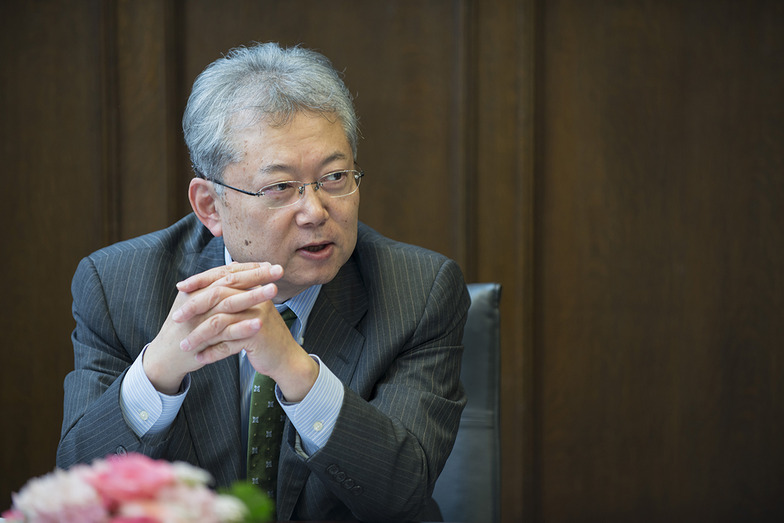
Improving Tourism Statistics Supports Research
Umezawa: When looking back at tourism research in Japan, Mr. Yazaki is an indispensable figure. Among the work he undertook at the Japan Tourism Agency, the "development of tourism statistics" was extremely important. In fact, until recent years, there were almost no usable statistics available for conducting tourism research. Even though each prefecture surveyed tourist numbers, there was no unified national standard for collecting statistics, making comparisons meaningless. There had been several attempts to establish a unified standard before, but it was only after Mr. Yazaki joined the Japan Tourism Agency that the development finally progressed. This achievement is significant.
Yagazaki: Coming from the private sector, I naively asked my boss what my job description was. One part was tourism statistics. The first Commissioner told me, "Create something that will endure even if the agency itself disappears." I had many arguments with the Statistics Bureau of the Ministry of Internal Affairs and Communications, but because my boss had said that, I was able to push forward boldly. Well, coming from the private sector, I also had the mindset that even if I got fired, it wouldn't be the end of the world (laughs).
Umezawa: What do you mean by "arguing with the Ministry of Internal Affairs"?
Yagazaki: They insisted national statistics must only deal with facts. For example, when designing the Survey on Consumption Trends of Foreign Visitors to Japan, capturing facts like how many times they'd visited or how much they spent was acceptable. But surveys incorporating respondents' opinions—like satisfaction levels, or what they did this time versus what they'd like to do next—weren't recognized as valid national statistics. But statistics should be designed with the next 10 or 15 years in mind. While the current focus tends to be on inbound visitor numbers and spending, the real issues for the future will be: where they went, what they did, whether they enjoyed it, their intent to revisit, and what they'd like to do if they come again. That's why we insisted on including those elements.
The current inbound boom is the fifth wave.
── What is the current state of research on the much-discussed inbound tourism?
Umezawa: The current inbound boom is the fifth wave. The first boom occurred during the Meiji era, when foreign technical experts were invited under the slogans of "Wealth and Military Strength" and "Industrial Promotion." The next wave came from the Taisho to Showa periods, coinciding with the establishment of the national park system. Classic hotels like the Imperial Hotel Kamikochi, Unzen Kanko Hotel, and Nara Hotel were built in prime locations within national parks. These were hotels for foreign tourists, constructed with low-interest loans from the Ministry of Finance. The third boom followed immediately after the war, from 1947 to 1948. The fourth boom coincided with the 1964 Tokyo Olympics. The current boom is the fifth.
These booms are deeply tied to policy, and policy is influenced by the economic situation. Fundamentally, the pattern is that when the economy becomes difficult, inbound tourism policies are implemented to acquire foreign currency; when it isn't, the focus shifts to domestic tourism policies. Immediately after the war, the economy was tough, so they tried to earn foreign currency through inbound tourism. However, the Korean War began in 1950 (Showa 25), Japan's economy improved, and inbound tourism didn't progress. Later, during the high-growth era, as Japanese people became wealthier, there was no inbound boom except during the Olympics. Domestic tourism promotion flourished during the high-growth period, but it was not aimed at foreigners; it was for the recreation of Japanese factory workers.
Yagazaki: Japanese travel agencies weren't originally good at inbound tourism, were they? Overseas travel by Japanese citizens was their main revenue source, while domestic travel was a high-volume market. Even when the Japan Tourism Agency was established and inbound tourism became a national policy, the reaction was more like, "Huh? Are we really doing this?" For travel agencies, it was about creating demand to build another strength besides overseas travel. I think it would have been good if there had been a movement from the start to pool everyone's wisdom.
Umezawa: Travel agencies held the perception that "inbound tourism isn't profitable." Inbound tourism back then was centered on Europe and America, and there simply weren't many travelers to begin with. While visitor numbers gradually increased, over half came from China, South Korea, Taiwan, and Hong Kong. Western travelers tended to book independently as FITs (Free Independent Travelers), making their own arrangements. So travel agencies didn't see much profit in it. The shift in perception that inbound tourism could be profitable only started happening in the last decade or so.
Yagazaki: Even in research, studies on inbound tourism have barely progressed. Often, statistics simply didn't exist, or if they did, they were just averages, making in-depth analysis difficult. For example, it's said that each visitor to Japan spends ¥156,000. If you just want to gauge the size of the tourism economy, this data might suffice. However, when a region aims to increase its inbound tourist numbers, averages become useless. Without knowing who spent what on what—information broken down by demographic—you can't translate that into actionable strategies. The national government is calling for attracting affluent visitors through inbound tourism. The term "affluent tourists" is somewhat vague, but essentially it refers to "high-value customers" – those with disposable income and the intellectual curiosity and understanding to engage with the culture of their travel destination. However, because data and statistics aren't linked to these attributes, we can't analyze the behavior of these high-value customers. That's the current situation.
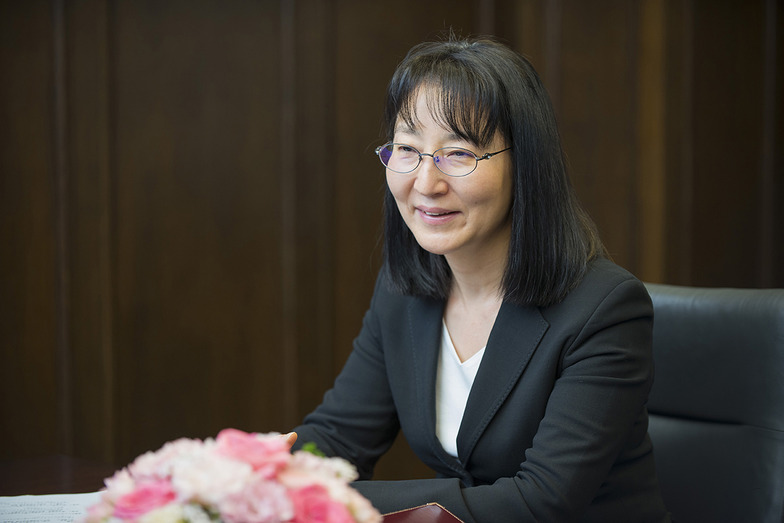
Japanese tourism research lacks foundational principles and theory
── Japanese tourism research has focused primarily on development. Conversely, where are the areas that haven't advanced much?
Umezawa: Our distinguished senior colleague, Professor Tadayoshi Suzuki (Professor Emeritus, Tokyo Institute of Technology), classified tourism into ten research fields to systematize it as an academic discipline [Chart]. This is "The Science and Art of Tourism." The weakest areas are probably tourism fundamentals and tourism theory. Regarding fundamentals, some professors research themes like "Why do people travel?", but overall, this area is underdeveloped.
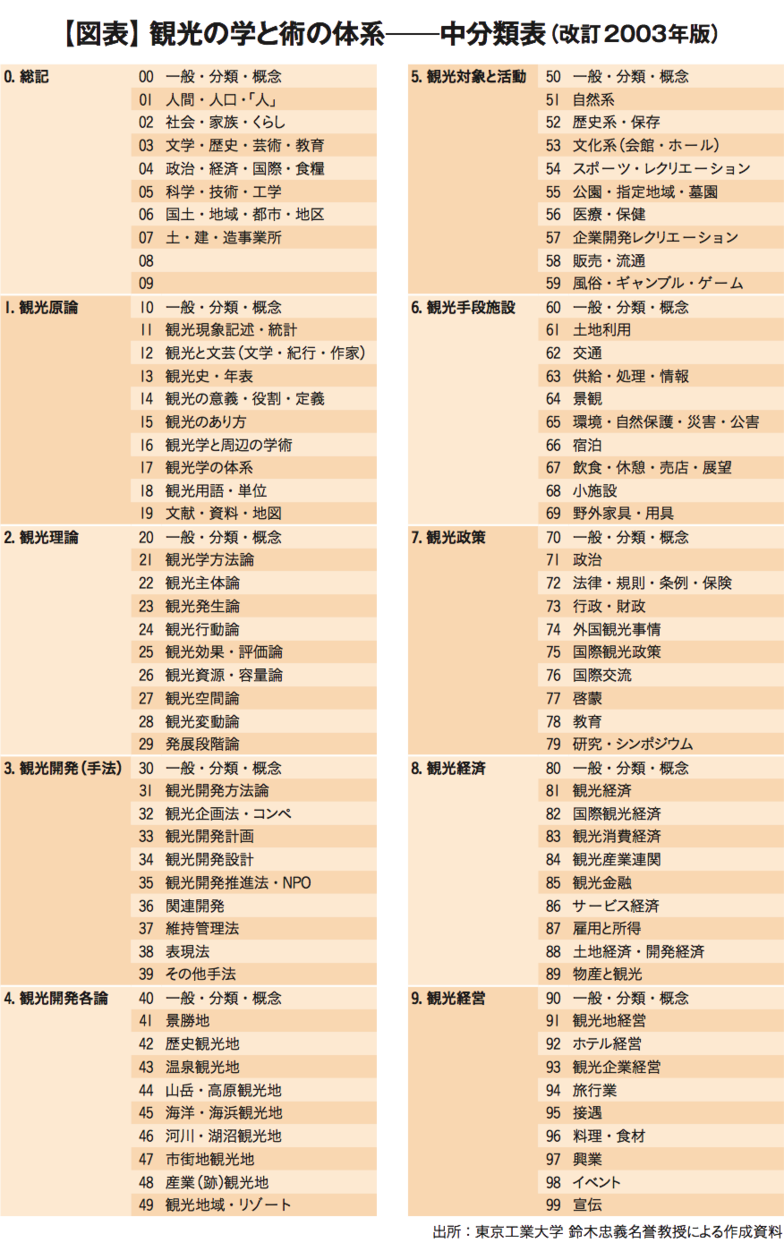
Yagasaki: It's an interesting theme, isn't it? What do you think, Umekawa-san?
Umezawa: Originally, it was probably hunting trips for survival, to find food. Then it evolved into pilgrimage journeys like Kumano pilgrimages or Fuji pilgrimage groups. But by the Edo period, pilgrimages to Ise became sightseeing tours. Nowadays, I think travel has gone beyond mere enjoyment and become a journey for self-realization.
Yagazaki: I see. Even as the form changes with the times, people must have this travel DNA. On the other hand, the percentage of people taking overnight tourist trips annually has fallen below 50%. The participation rate is especially low among younger men. Digging into the fundamental question of why people travel might offer clues when considering this decline in travel. In that sense, it's an important theme.
Umezawa: What about tourism theory?
Yagazaki: Theories are weak too. While there's a wealth of accumulated research on destination development, it often hasn't been systematized into theories that effectively solve problems. Even when it has, it doesn't seem to reach those actually involved in destination development locally. In tourism practice, measures that are theoretically off-limits are often implemented without hesitation. For example, we know that mayors going on top-level sales trips has little effect, yet they still do it for their own satisfaction. If a mayor from a municipality with a regional airport goes to attract new routes, that's one thing. But if the top leader simply goes on a campaign called a "tourism caravan," it won't increase tourist numbers. Instead, overseas visitors to these destinations develop distrust toward the disorganized Japanese side. I believe it's necessary to theorize such issues and present them in a more understandable form.
More marketing in tourism policy
Umezawa: Another weakness is tourism management. Research in areas like marketing and corporate studies is particularly lacking.
Yagazaki: I agree. For instance, research on repeat visitors is lagging. Currently, since budgets are allocated for tourism, municipalities are working hard on promotions to attract new customers. However, the customer acquisition cost is actually much lower when promoting to existing customers rather than new ones. Other industries thoroughly study this difference, so companies base their promotion strategies on that knowledge. But because it hasn't been proven in tourism, local governments just keep focusing on new customer promotions.
Umezawa: I believe there should be more case method research. In the US, case studies of successful companies are common practice, but Japan clearly lags behind. The travel industry, aviation industry, and railway industry each have successful companies. We should thoroughly analyze the business structures and histories of these companies – how they generated profits and how they developed.
Yagazaki: There's also the fundamental problem that policymakers don't prioritize marketing. Inbound tourism is international competition. Many overseas tourism bureaus have staff with marketing master's degrees who understand marketing theory as a given. To compete with them, we need backing from the research field, yet in tourism, the distance between policy and researchers is vast. I was genuinely envious of how, when the Ministry of Land, Infrastructure, Transport and Tourism (MLIT) tries to implement a new policy, researchers in civil engineering and transportation serve as their brain trust. It's regrettable that we don't yet have that in tourism.
Umezawa: There's no network, and government officials don't know university professors well. Researchers also share the blame. There are simply too many tourism-related academic societies now—11 in total. This leaves government officials unsure where to reach out or how to engage.
Yagazaki: Moreover, each society has different characteristics and histories, giving a fragmented impression. If supporting one means neglecting another, government offices operating on principles of fairness and impartiality find it difficult to approach researchers. This is a waste. Researchers could gain valuable experience in policy-making settings, yet such opportunities are scarce.
Umekawa: Reorganizing the academic societies is one future challenge. We should first unite under a large umbrella organization, then branch out into specialized committees like development theory or marketing. This approach offers greater benefits for both government agencies and researchers. I believe it could be achieved by having someone with significant weight, like a former head of the Tourism Agency, take the leadership role.

Crisis Management and Globalization as New Themes
── What themes do you foresee emerging in the future?
Yagazaki: What concerns me is research on countermeasures for event risks. Japan is a country prone to disasters like earthquakes and typhoons. If a tourist destination is hit by a disaster, what kind of strategies exist? And how should the affected area act? I wonder if there's something that can be standardized for the initial response phase through the next stages.
Umekawa: Tourism and safety/security are indeed crucial research topics. While companies have BCP (Business Continuity Planning) for crisis management, we definitely need a tourism-specific version. For example, when the volcano erupted in Hakone, the way information was disseminated became problematic. While it's essential to release accurate information to prevent reputational damage, announcing "It's safe" while the eruption is still ongoing could lead to a major disaster. How should information be organized, and what should be communicated when? We need to systematize that methodology.
Yagazaki: Another theme I'm focusing on is ICT. Japan's tourism industry is weak in ICT. Currently, OTAs (Online Travel Agents) like Expedia and Priceline are continuously entering the market from overseas. Furthermore, in the rapidly expanding private lodging market, Airbnb holds a dominant position. Overseas ICT companies are effortlessly crossing borders to provide services. Had Japanese companies grasped the global landscape, they could have anticipated this offensive. Instead, they've been reactive, failing to establish a countermeasure system.
Umezawa: I also believe ICT is extremely important. Furthermore, I see a problem in the Japanese tourism industry's inability to compete with overseas companies. The Basic Plan for Promoting Tourism Nation includes talk of localizing the tourism industry – that is, rooting it in the regions. Yet there is absolutely no concept of cultivating tourism companies that can compete globally. Can this truly be called the globalization of tourism? Among Japanese companies, Hoshino Resorts is actively challenging overseas markets. But the scale is different from global overseas companies. Marriott acquired Starwood and now operates in about 120 countries. I think the perspective of fostering world-class companies that can compete with such giants should be present in policy and research.
Yagazaki: It's undeniable that Japan's tourism industry has become isolated. The issue of no-shows—where customers don't show up despite having reservations—often causes trouble because Japan's cancellation policies differ from international standards. Globalization is necessary to address such issues.
Umezawa: Not just companies, but regions face the same problem. Places like Niseko and Hakuba Village now see so many inbound tourists that Japanese often isn't even the primary language spoken. Many foreign tourists come specifically for skiing and stay for about one to three weeks. As they settle in, they generate garbage. However, unfamiliar with local disposal rules, they often discard waste without sorting or even litter. Ideally, municipalities should proactively establish and publicize these rules, but they too have yet to fully adapt to global standards. It's not just tourists flooding in from overseas. There's an increasing number of cases where foreigners invest in tourist areas, buying up inns and hotels or purchasing land. Since there are even cases of water sources being bought up, some kind of restraint is probably necessary, but rules for that aren't in place either.
Yagasaki: It might be unfair to push all the burden of creating rules for globalization onto companies and local communities. What's crucial is for the national government and researchers to contribute their expertise. Going forward, we'll likely need to share examples, saying, "This is how it is overseas. These kinds of situations are foreseeable."
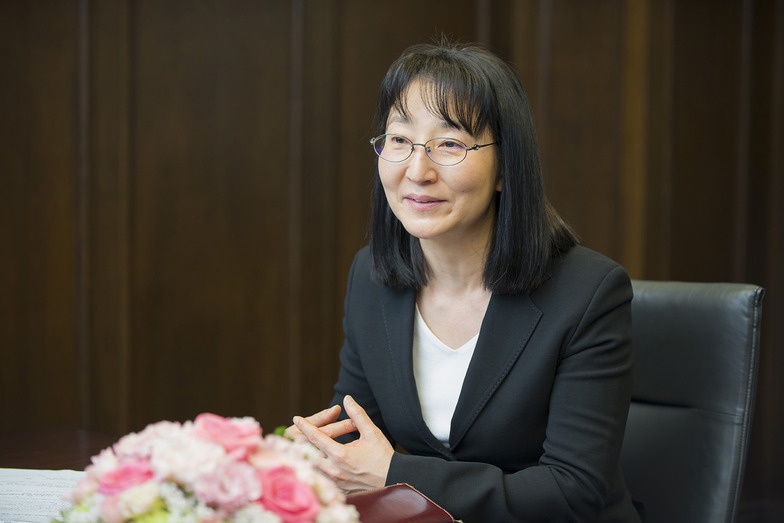
Regional Pricing Strategy is Key
Umekawa: I see tremendous potential in Japanese ryokan inns. They possess a uniqueness found only in Japan, and with over 40,000 establishments nationwide, they offer a scale of accommodation capacity unmatched anywhere else in the world.
Yagasaki: The nationwide reach is another defining feature of Japanese ryokan. When thinking of distinctive lodging in France, a major inbound destination, châteaux come to mind, but they're only found in very limited areas.
Umezawa: Precisely because they can be such a powerful asset, research into raising the level of ryokan is essential. Unfortunately, ryokan also have a dark side for employees. Unless we improve productivity, enhance employee quality, and build an industry that can pay proper salaries, ryokan themselves risk disappearing.
Yagazaki: This isn't limited to inns, but I strongly believe there should be more research on pricing. Japan's tourism industry tends to set prices based on the idea that if we make it cheap, customers will come, rather than adding value and charging accordingly. The result is commoditization and a race to the bottom on price. While hotels might have rooms costing 1 million yen per night, even the most expensive rooms in inns rarely exceed 200,000 yen. You get two meals—a high-level kaiseki dinner and a delicious breakfast—plus a room with an open-air bath or a private garden. Is that really the right price?
Umezawa: That point is very important. In a deflationary economy, prices for various things, including tourism, have fallen. But did that increase the number of customers? Not really. Rather, lowering prices led to a decline in service quality, resulting in more customers deciding they wouldn't return. Moving forward, it will be crucial to break free from this cycle and adopt a pricing strategy that charges appropriately for high-quality service, encouraging repeat visits. While some executives, like Masayuki Onishi, President of Hokkaido's Tsuruga Holdings, recognize the importance of pricing strategy, they remain few and far between.
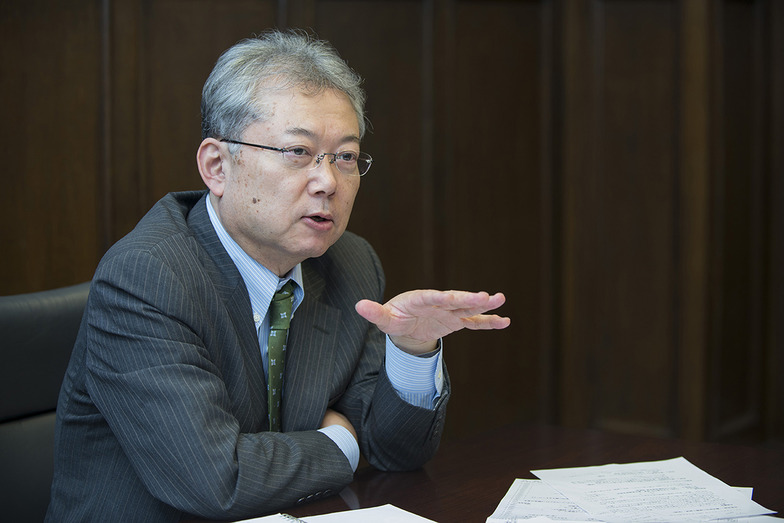
Yagasaki: The first step is for inn owners themselves to recognize this, but it's also vital for the entire region to adopt a pricing strategy. Otherwise, overseas operators will easily undercut them. In this regard, Yufuin Onsen is doing it well. They maintain a diverse range of prices, from around ¥6,000 to ¥60,000 per person per night with two meals, while firmly holding their ground on pricing as a region.
Umezawa: Yufuin has two major ryokan, Kameno-i Villa and Tamano-yu. These two act as price leaders, right? If the top players lower prices, others feel compelled to follow suit. But these two ryokan gritted their teeth and refused to lower prices, even during tough times.
Yagazaki: The Yokohama case is also noteworthy. Currently, Pacifico Yokohama receives the most MICE (Meetings, Incentive Travel, Conventions, Exhibitions) inquiries in Japan. For international conferences alone, they reportedly handle about 4,000 inquiries annually. I heard an interesting story about the hotels around Pacifico. They negotiate fiercely to avoid being undercut by overseas operators managing the international conferences. Conversely, I hear that overseas operators are now targeting hotels near Yokohama Station to drive down rates. Studying such cases should provide valuable insights for regional pricing strategies.
Umezawa: As we discussed today, Japanese tourism research still has many weak points, particularly in the industrial sector. Even the most advanced development-oriented research has been largely stagnant for the past 30 years since the bubble burst. While it lags behind other research fields, conversely, tourism could be seen as an area with significant potential for growth. We can look forward to its future development.
〔 End 〕
※This content is available on the Yoshida Hideo Memorial Foundation website.
Was this article helpful?
Newsletter registration is here
We select and publish important news every day
For inquiries about this article
Back Numbers
Author

ADVERTISING STUDIES
<a href="http://www.yhmf.jp/index.html" target="_blank"><span style="color:#336699">http://www.yhmf.jp/index.html</span></a><br/> The Hideo Yoshida Memorial Foundation publishes the research and public relations journal "AD STUDIES" four times a year. Each issue features special topics on advertising, communication, and marketing. Back issues from the inaugural edition to the latest issue are available on our foundation's homepage.

Tomoya Umekawa
Japan National Tourist Organization
Born in Niigata Prefecture in 1958. Graduated from the Department of Social Engineering, Urban and Regional Planning Major, Third Cluster, University of Tsukuba in 1981. Joined the Japan National Tourist Organization (Researcher, Tourism Planning Office, Research Department) the same year. Deeply involved in formulating and producing urban and regional plans centered on tourism resorts, tourism planning, tourism vision, tourism destination management, tourism policy, tourism town development, and hot spring resort revitalization. Visiting Professor, Graduate School of Tsukuba University. Also served as a part-time lecturer at the University of Tokyo Graduate School. Affiliated academic societies include the Japan Tourism Research Association (Vice President) and the Japan Institute of Urban Planning.

Noriko Yagasaki
Toyo University
Graduated from International Christian University, College of Liberal Arts, in 1987. Earned a Master of Laws (LL.M.) in Political Science from Kyushu University Graduate School of Law in 2006. Joined Sumitomo Bank, Ltd. in 1987. Joined Japan Research Institute, Ltd. in 1989. Served as Counselor (Tourism Economics) at the Japan Tourism Agency, Ministry of Land, Infrastructure, Transport and Tourism from October 2008 to March 2011. Research fields include tourism policy, tourism administration, tourism law systems, inbound tourism promotion, and tourism demand leveling. Currently serves as an outside director for Japan Freight Railway Company, Ltd. and Tobu Railway Co., Ltd. Affiliated academic societies include the Japan Society for Service Studies, the Japan Leisure Tourism Society, the Japan Tourism and Community Development Society, the Japan Society of Transportation, the Japan Society for International Tourism, and the International Traffic Safety Association.

